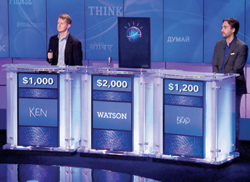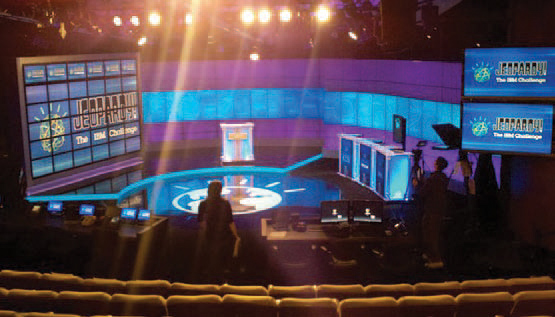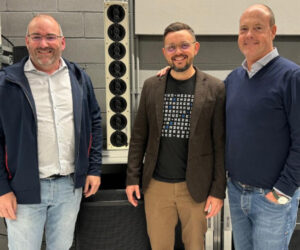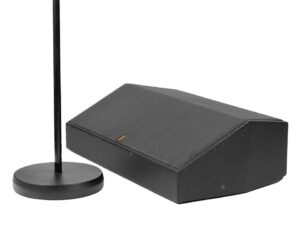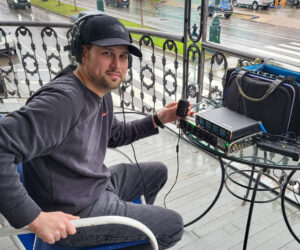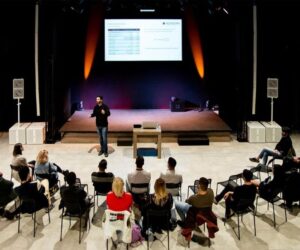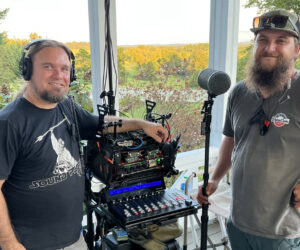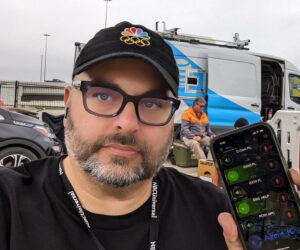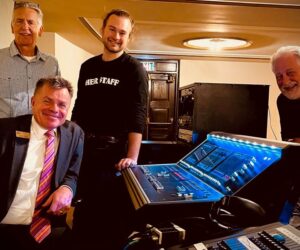“I’ll take interesting pro audio applications for 1000, Alex.”
Jeopardy!, the iconic television quiz show produced by Sony Pictures Television, recently broadcast a well-publicized series of “man versus machine” contests.
Dubbed the IBM Challenge, it pitted the new IBM artificial intelligence computer system Watson (named after IBM founder Thomas J. Watson) against two human opponents. And not just any humans – Ken Jennings has won the most consecutive games in a row (74) in show history, while Brad Rutter is the biggest all-time money winner (nearly $3.5 million).
Viewers know that Watson acquitted “himself ” (“itself ”?) quite well, but there’s much more to the story, including the live audio perspective.
As usual, the episodes were taped in front of an audience – however, not in the show’s studios in Culver City, CA, but rather, in the atrium of IBM headquarters in Armonk, NY.
Los Angeles-based Production Resource Group (PRG), which is responsible for the design, installation and engineering of the Audio and Lighting systems utilized for all off-site Jeopardy! broadcasts, stepped up to do the same for the IBM Challenge.
“There were a number of factors that made this a very unique situation,” explains Bill Daly, the PRG audio system engineer who’s been working remote Jeopardy! broadcasts since 1997.
“Not only was one of the competitors a computer, but we had press from all over the world attending the first day of the event, and the live broadcast was taking place from a stage located in a company headquarters. It was definitely different than the usual road show.”
The physical characteristics of the atrium site presented an interesting contrast to other Jeopardy! remote sites, which are often large enough to require flown line arrays to provide sufficient audience coverage.
Here the space was quite intimate in scale, with the raked theater-style seating accommodating an audience of only 130 or so.
Yet while relatively miniscule in scale, it presented plenty of hard, parallel surfaces to excite and extend sonic energy – definitely a no-no in standard sound reinforcement and even more so when it’s also a broadcast demanding maximum vocal intelligibility.
“What it meant was the design of an entirely different sound system than we normally use for remotes,” Daly notes. He started at the stage, choosing single Meyer Sound UPQ-1P self-powered loudspeakers (single 15-inch, 4-in compression driver on horn) flown left and right from stage truss, in a position where they could combine to provide primary coverage of the audience while staying out of camera sightlines.

The constant Q characteristics of these loudspeakers in providing 80-degree horizontal by 50-degree vertical dispersion helped keep the energy focused on the audience and off of reflective surfaces.
“The UPQ-1Ps provide excellent vocal intelligibility, and being self-powered, they also eliminated the need for an amp rack in the very limited available space, which was very helpful,” he adds. “The audience mix is always a little tricky where you’re trying to satisfy to competing goals – loud enough for the live audience and quiet enough for the broadcast audience.”
Coverage was bolstered with a distributed system headed by 42 Apogee Sound SSM compact loudspeakers (dual 4.5-in, 1-in dome tweeter) placed equidistantly beneath seats.
These were optimized with proprietary Apogee CORREQT FFT analysis, and then grouped into zones, with time alignment relative to the main loudspeakers supplied by four XTA DP448 digital processors rack-mounted at the system mix/control position located at the center/rear of the seating area.


